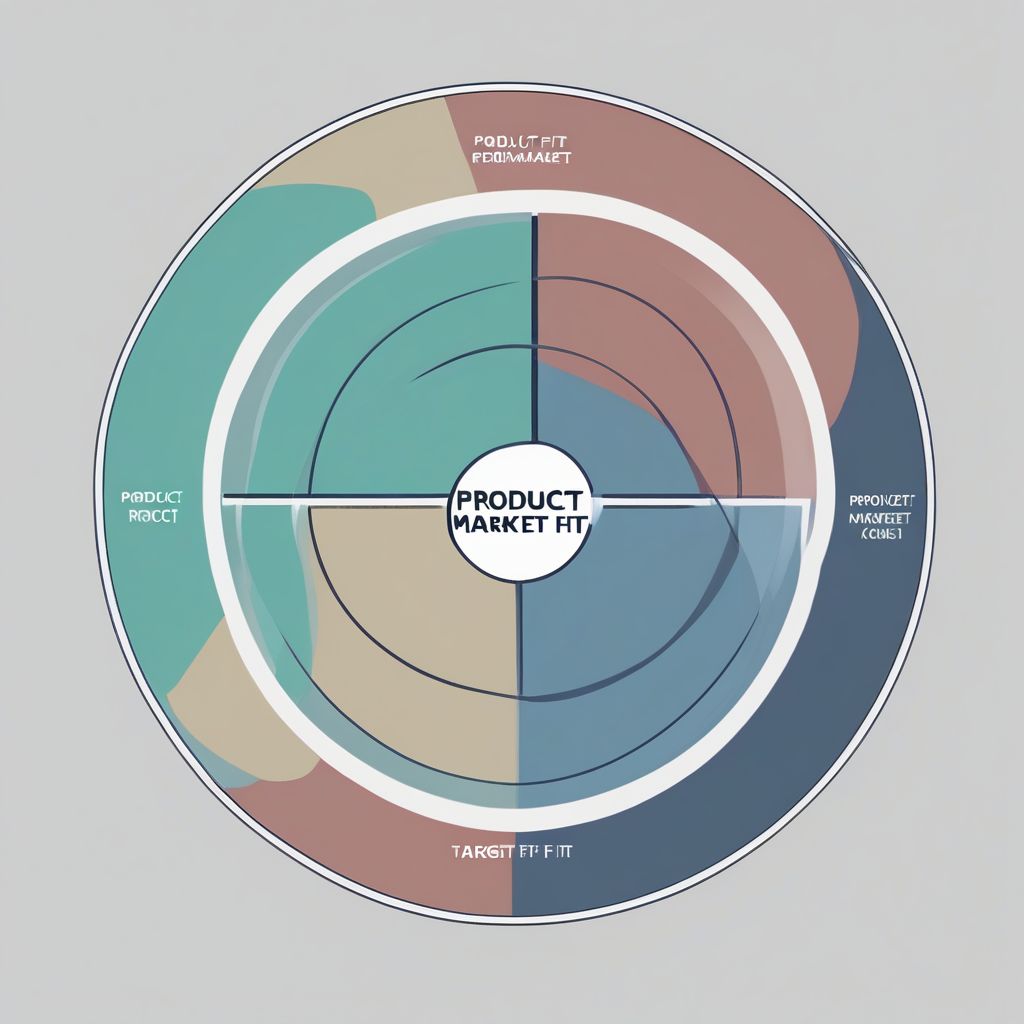“Build it and they will come” – this age-old adage might work for majestic castles, but in the fast-paced world of startups, it’s a recipe for disaster. The key to success lies in achieving product-market fit, a concept as crucial as the ingredients in a healthy recipe.
 Product Market Fit Concept
Product Market Fit Concept
Imagine this: you’ve poured your heart and soul into developing an amazing app that helps people track their macronutrients and plan meals. You’re certain it’s a game-changer. But after launching, the response is underwhelming. What went wrong? You might not have achieved product-market fit.
Product-market fit means creating a product that deeply resonates with your target audience, solving a real problem for them in a way they love. It’s about aligning your product’s value proposition with the needs, desires, and frustrations of your ideal customers.
Why is Product-Market Fit Essential?
In the startup world, achieving product-market fit is like finding the perfect spice blend for a dish – it can make or break your success. Here’s why:
1. Reduced Risk of Failure: According to CB Insights, the number one reason startups fail is a lack of market need. By ensuring product-market fit, you significantly mitigate this risk.
2. Sustainable Growth: When your product truly solves a problem for your target market, they become your biggest advocates, driving organic growth through word-of-mouth and positive reviews.
3. Increased Profitability: A product that perfectly aligns with customer needs commands premium pricing, boosting your profitability and sustainability.
4. Enhanced Funding Opportunities: Investors are naturally drawn to businesses with proven product-market fit as it signifies a higher likelihood of success and return on investment.
How to Ensure Product-Market Fit in Your Development Process
Achieving product-market fit isn’t a one-time event; it’s an ongoing process woven into the very fabric of your development cycle. Here’s how to make it happen:
1. Define Your Target Audience: Get Granular
Before you even start building, understand your ideal customer inside and out. Don’t just define them by demographics; delve into their psychographics – their values, motivations, pain points, and aspirations.
- Create detailed buyer personas: Develop semi-fictional representations of your ideal customers, complete with names, backgrounds, goals, challenges, and online behavior.
- Conduct thorough market research: Use surveys, interviews, and focus groups to gather insights directly from your target audience.
2. Identify a Real Problem Worth Solving
A successful product addresses a genuine need or pain point experienced by your target audience.
- Analyze market trends: Stay informed about emerging trends and identify potential gaps or unmet needs within your chosen market.
- Listen to your target audience: Pay close attention to online communities, forums, and social media conversations to understand their challenges and frustrations.
3. Develop a Minimum Viable Product (MVP)
Building a full-fledged product without validating your assumptions is like trying to bake a cake without first tasting the batter. An MVP is a stripped-down version of your product with just enough features to attract early adopters and gather valuable feedback.
- Focus on core functionalities: Prioritize features that directly address your target audience’s primary pain point.
- Iterate based on feedback: Use the feedback you gather from your MVP to refine and improve your product.
4. Test, Analyze, and Iterate Relentlessly
Launching your MVP is just the beginning. Continuously collect data on user behavior, gather feedback, and use it to make informed decisions about future iterations.
- Track key metrics: Monitor metrics like customer acquisition cost, customer lifetime value, and churn rate to gauge the success of your product and identify areas for improvement.
- A/B test different features and messaging: Experiment with different variations of your product to see what resonates best with your target audience.
5. Cultivate a Customer-Centric Culture
Building a company obsessed with customer satisfaction is vital for achieving and maintaining product-market fit.
- Encourage open communication: Create a culture where feedback is actively sought, valued, and acted upon.
- Empower your team: Give your team the autonomy and resources they need to solve customer problems effectively.
[amazon bestseller=”product market fit”]
Conclusion: The Journey to Product-Market Fit
Achieving product-market fit is an ongoing process of learning, adapting, and iterating. It’s about deeply understanding your target audience, building a product that solves their problems, and constantly evolving to meet their changing needs. Remember, the journey to product-market fit is a marathon, not a sprint. Embrace the process, stay agile, and never stop listening to your customers.
What steps are you taking to ensure your product resonates with your target market? Share your thoughts in the comments below!
